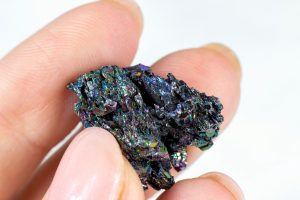How New Balance, Crocs and Target work together on circular shoes

Every imaginable combination of sustainability buzzwords — alliance, coalition, green, network — seems to exist as a multistakeholder initiative.
But one new initiative, The Footwear Collective (TFC), stands out for its enthusiastic leadership, committed members and intention to inspire other industries. TFC formed in 2023 to unify the footwear industry to combat carbon emissions and promote circular practices. Eight members include New Balance, On, Crocs and Target. TFC has identified nearly 50 pre-competitive projects and is narrowing down high-impact initiatives.
TFC founder and executive director Yuly Fuentes-Medel is also the program manager of fiber technologies at Massachusetts Institute of Technology, and a venture partner and senior adviser at Closed Loop Partners. In March 2022, she convened the Circular Shoe Systems Summit of researchers, policymakers, investors, waste management providers and leading brands.
That laid the groundwork for The Footwear Manifesto, which outlines the barriers to industry circularity. It named collective pathways to decouple revenue from environmental impact, such as aligning on material use, standardizing circularity metrics, building shared take-back programs, improving recycling technologies and leveraging existing waste management capacity. For both summit participants and those involved in the report, the need for a consortium was clear.
TFC is the first industry-specific project of EarthDNA, a nonprofit founded by aerospace leaders using AI to combat climate change.
Unique challenges
Many circularity efforts focus on apparel but the complexity of shoe manufacturing has often sidelined footwear. An estimated 300 million pairs of shoes are sent to U.S. landfills every year, where they take decades to decompose.
Everything from the material composition of shoes to their global supply chain is complicated and stubbornly linear. An average running shoe involves 65 parts and at least 350 processing steps, according to a lifecycle assessment by MIT. This carbon and labor intensive system makes it difficult to recover and reuse the various parts.
For decades, innovation in the footwear industry has been driven by a constant battle between brands over intellectual property and design differentiation.
Another major hurdle is a mismatch between the short lifespan of the shoe and its long-lasting materials, Fuentes-Medel said by email. Varying rates of material degradation complicate recycling attempts, and often, functional materials are discarded along with shoes.
Finally, the industry has been historically averse to pre-competitive collaboration. “For decades, innovation in the footwear industry has been driven by a constant battle between brands over intellectual property and design differentiation,” said Fuentes-Medel.
The Footwear Collective recognizes that brands can’t continue to act alone. It organizes its work into three pillars of collaboration.
The first pillar, circular materials, prioritizes developing sustainable materials, building responsible supply chains and establishing channels for proper end-of-life management. Next, the infrastructure pillar focuses on scaling circular systems and reclaiming significant volumes of high-value waste products. Lastly, consumer behavior efforts center on connecting with consumers, fostering enthusiasm and integrating circular practices into lifestyles.
Universal solutions
Moreover, TFC is creating a compelling example of precompetitive collaboration for other industries to emulate. Five months in, Fuentes-Medel emphasizes that “circularity is a team sport,” prioritizing face-to-face connection over remote collaboration.
Fuentes-Medel emphasizes communicating the business case of circularity, including opportunities to innovate and create jobs. “We aim to shatter the misconception that companies must choose between profitability and sustainability, showcasing that both can be achieved simultaneously,” Fuentes-Medel said.
TFC aligns its objectives with member businesses’ own KPIs to ensure buy-in.
TFC aligns its objectives with member businesses’ own KPIs to ensure buy-in. In addition, TFC seeks to identify champions across members’ marketing, design and material sourcing teams, and eventually, their chief financial officers.
Pre-competitive collaborations often falter due to a lack of clear incentives, risk-averse participants and decision-making challenges amongst members. Yet TFC members have established mechanisms to avoid common pitfalls.
The circular economy community will be watching closely.






